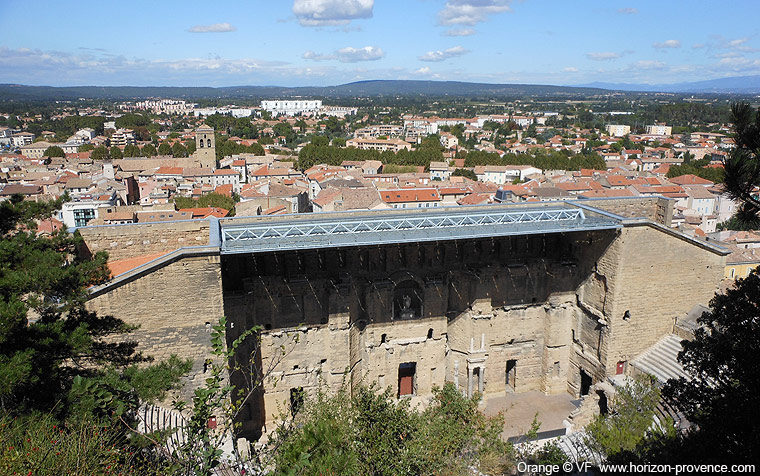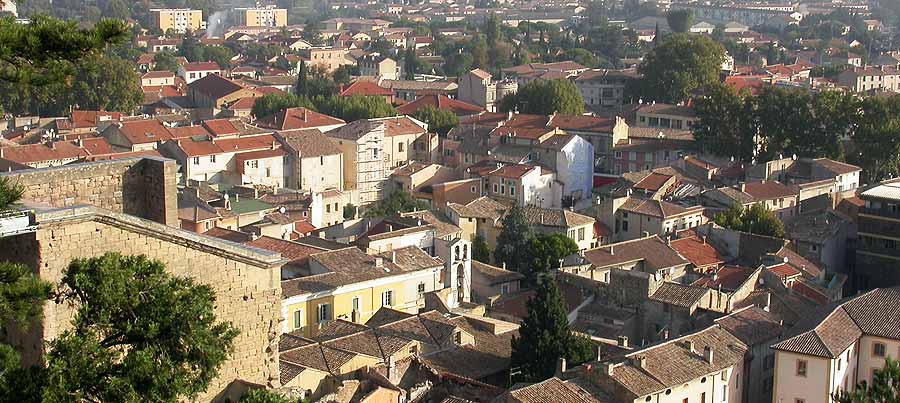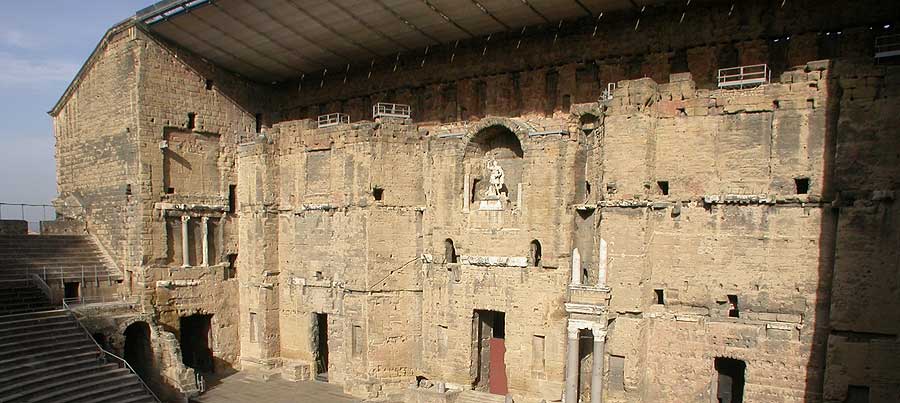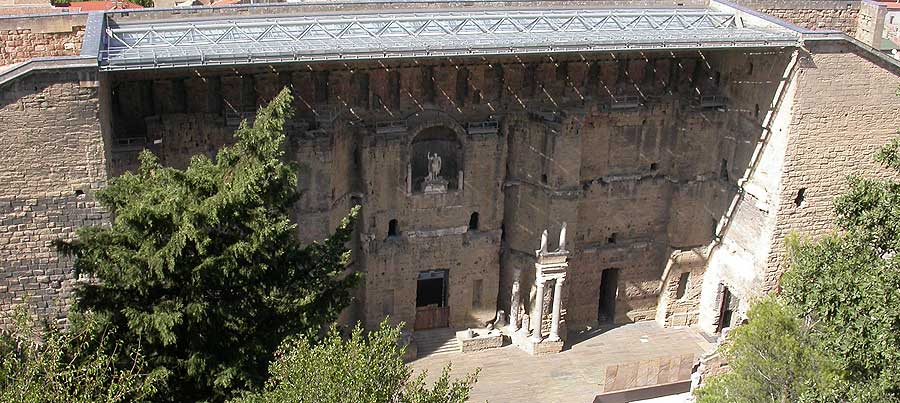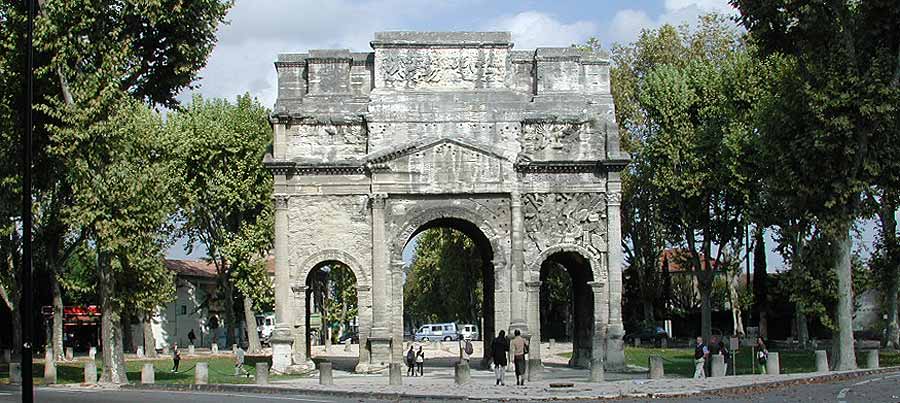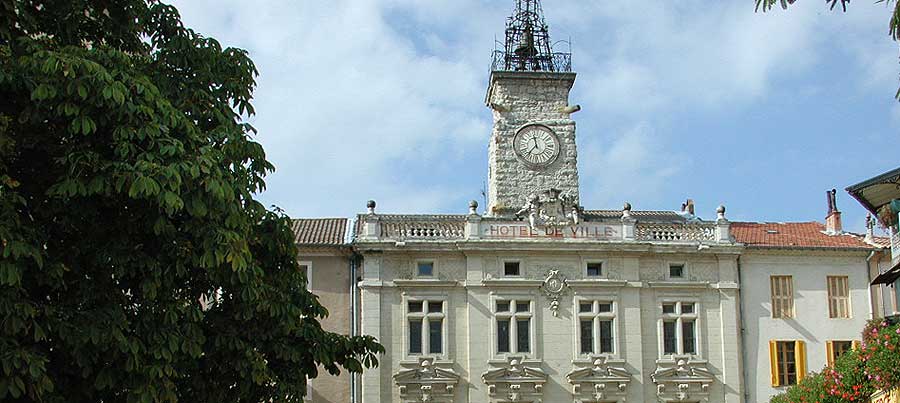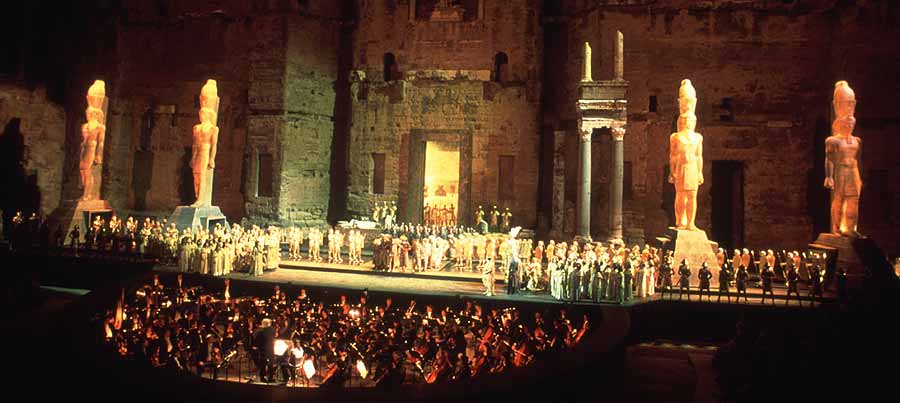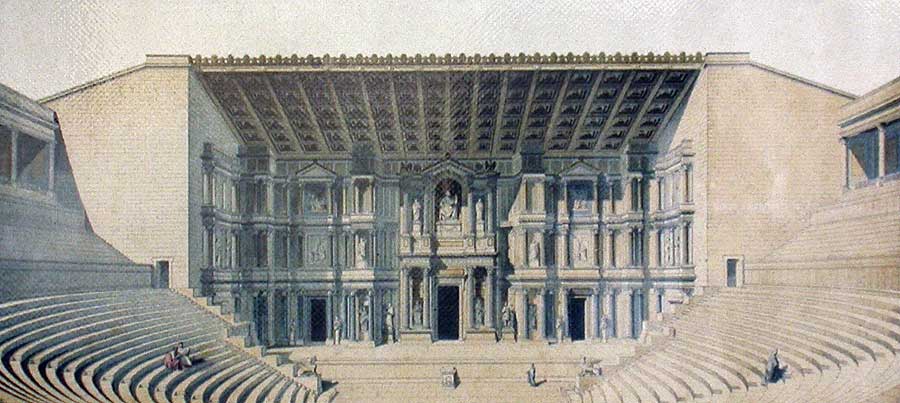Orange "City of the Princes" in Provence
 Gate
of Provence for travellers coming from the north of France vy the Rhône
valley, Orange is at the crossroads of civilizations
and culture.
Gate
of Provence for travellers coming from the north of France vy the Rhône
valley, Orange is at the crossroads of civilizations
and culture.
Since ancient time, History has let many traces here in Orange, with prestigious visible monuments but also the souvenir of tragic events.
Lying at the foot of the Saint Eutrope hill, Orange the provençal city welcomes the tourists coming here to admire the world famous Roman Theater and Triomphal Arch, both listed as World Heritage by the UNESCO.
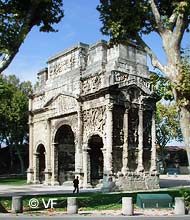
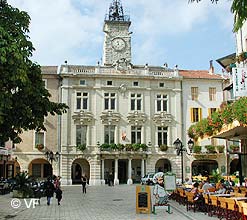
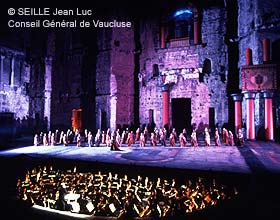
Around the ancient Theater the busy life of the city centre is animated every Thursday morning by the great provencal market.
The city is also dedicated to Art, the roman Theater in Orange thrills every summer when it welcomes the Chorégies, a presigious Festival for Opera and lyrical Art, displaying international quality shows.
Roman Theatre of Orange
The roman theatre in Orange is one of the most beautiful and well preserved of the ancient times. It was build soon after the settlement of the roman city during the reign of the emperor Augustus, whom the imperial statue adorns the scene wall.
The facade is the better preserved of oll roman theatre remaining. It is 103 metres width and 37 meters height. The king of France Louis XIV qualified it "the most beautiful wall of the kingdom"
 Reconstitution du théâtre antique par Auguste Caristie, 1856,
Reconstitution du théâtre antique par Auguste Caristie, 1856,Musée d'Art et d'Histoire d'Orange
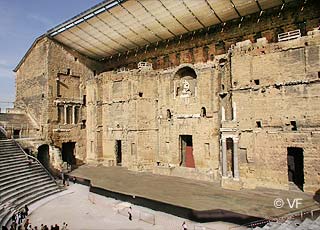
The ancient Theatre could hold to 10 000 spectators to attend the performances. It was transformed as a fortress during medieval times, and later in housing area, what probably preserved it from destruction.
A restoration program was launched in 1825 by Prosper Mérimée, the architect Auguste Caristie directed the works.
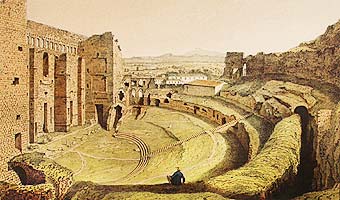
Vue intérieure du théâtre antique, par Asselineau,
19ème siècle, Musée d'Art et d'Histoire d'Orange
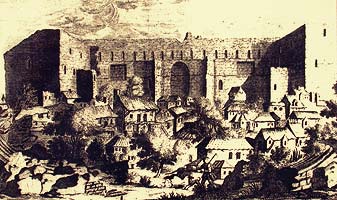
Vue intérieure du théâtre antique avec maisons,
par Pierre Fourdiguier, 18ème siècle
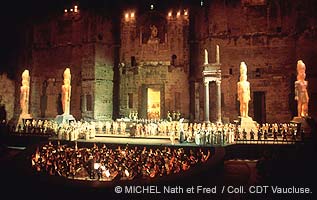 Since 1860, during the "Chorégies
d'Orange", Opera performances are given every summer in this
magical place with exceptionnal acoustics The "Chorégies
d'Orange" are the oldest festival in France, the most renown
artists have performed here in the ancient theatre dedicated to
lyric art, giving to this place an international artistic reputation.
Since 1860, during the "Chorégies
d'Orange", Opera performances are given every summer in this
magical place with exceptionnal acoustics The "Chorégies
d'Orange" are the oldest festival in France, the most renown
artists have performed here in the ancient theatre dedicated to
lyric art, giving to this place an international artistic reputation.
Orange, a roman city
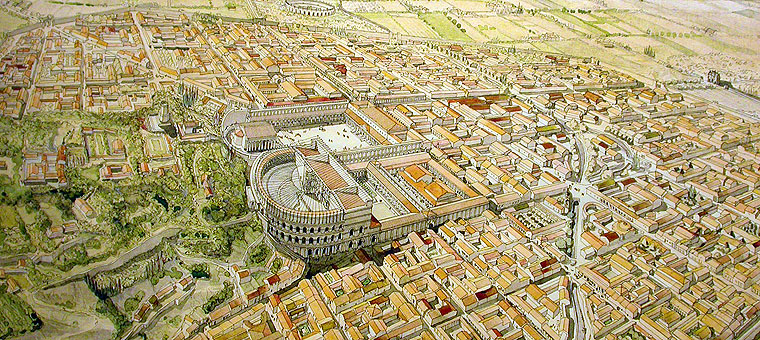
As a natural refuge, the la Saint Eutrope hill has been occupied since prehistoric times. Orange was, along with Avignon and Cavaillon, one of the main city of the Cavare, the local gallic-ligurian people, before the roman settlement. A Castrum was built on the hill.
The roman legions have been crushed by hordes of german tribes in 105 b.JC. The general Marius get rid of the germans invaders three years later.
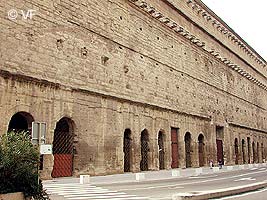

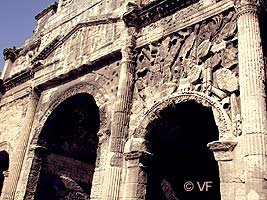
The city of roman right Arausio is founded in 46 b.JC when the emperor Octavius settled the veterans of the second legion who fought with Julius Cesar during the Gallic campains. The city flourish and adorns with grandiose monuments : forum, therms, aqueduc, city walls and of course the theatre and the triomphal arch at the northern gate of the city, celebrating the conquest of the Gaul. Roman city par excellence, Orange displays then the superiority of the urban civilization brought by Rome.
The Princes of Orange Nassau
At the beginning, the legendary Guillaume au Court Nez (the short nose) was a companion of Charlemagne, celebrated in the chansons de geste of Middle-Age. The cornet on Orange's arms is a tribute to him, it comes from its surname (court nez)
The first counts of Orange appears during the 11th century in the Chronicles : Rambaud II goes with Godefroy de Bouillon at the 2nd Crusade and finds fame during fights in the Holy Land and enters in Jerusalem.
In 1163, the germanic Emperor Frederick I Barbarossa raises Orange as a principality. By the play of succession, the Principality of Orange gets the House of the Princes des Baux (1150-1393), and in the House of Châlon and then in 1544 in the House of Nassau.

 William the Silent, Prince of Orange Nassau
William the Silent, Prince of Orange Nassau  Philip William, Prince of Orange-Nassau
Philip William, Prince of Orange-Nassau  Maurice, Prince of Orange Nassau
Maurice, Prince of Orange Nassau In 1544, William 1st the Silent, Prince of Orange-Nassau, becomes "Stadtholder" of the Netherlands. He is considered by many as national hero and the founder of the Netherlands nation. Under his reign, Orange is centre for the Reformation, the catholic and protestant communities fight for the control of the city. In 1562 and 1571, the catholic troups plunder the city, perpetreting horrible massacres among the population.

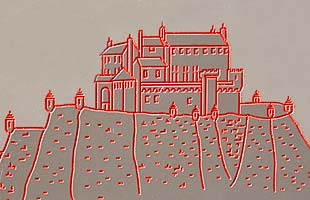
In 1620, Maurice of Orange-Nassau builds a great fortress on the hill Saint Eutrope. The conflict between William III of Orange-Nassau and the king of France Louis XIV causes the incorporation of the Principality of Orange into the French kingdom, and the destruction of the castle.
There is practically nothing left from this mighty fortress, the ruins are since a long time recovered by a pretty parc planted with trees. It's a very nice place for a stroll, which offers a splendid panorama on Orange and the region surrounding.
The souvereign of Netherlands still keeps the honorary title of Prince of Orange, orange is the national color of the country, weared by the football national team.
Accommodation in Orange
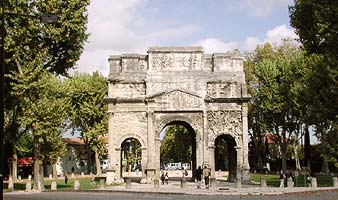
 les
Tilleuls
les
Tilleuls
Bed and breakfast and dinner in Orange -
Maryse et Alexandre -
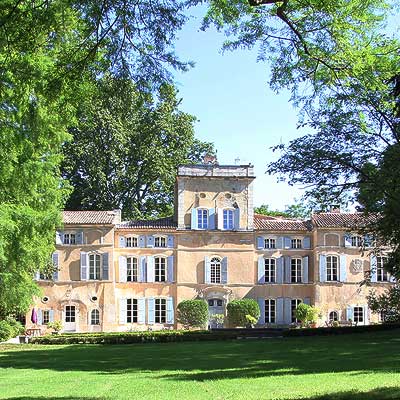 Le Chateau des Barrenques
Le Chateau des Barrenques
Prestige guest rooms and gîte in a Castle of the 16th century with a great park in Lapalud.
Selection of B&B in Orange amongst the B&B of Provence
Tourist Office web site : otorange.fr
Coming to Orange
GPS coordinates N 44°08'09'' - E 4°48'31''
Orange location : altitude 30 meters, 29000 inhabitants, 10 km from Chateauneuf du Pape, 19km from Cairanne, 20 km from Vacqueyras, 21 km from Gigondas, 29 km de Vaison-la-Romaine, 31 km from Avignon

![Côtes-du-Rhône [fr]](/images/version_francais.gif)
![Côtes-du-Rhône [en]](/images/version_english.gif)
